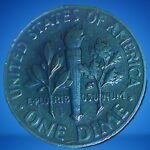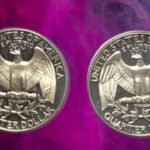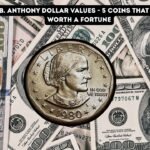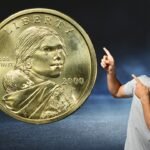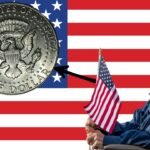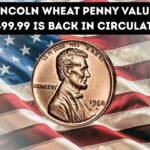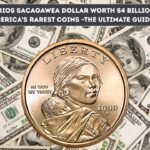You know that old jar of coins sitting on your dresser or tucked away in a kitchen drawer? Well, you might want to take a second look at it. Seriously, some of those dusty little pennies could be worth way more than you’d imagine—like, thousands of dollars more. It sounds wild, but coin collectors (or numismatists, if we’re being proper) are constantly on the hunt for certain rare American pennies that have become legends in the collecting world. And the best part? Many of them are still floating around in circulation, just waiting to be found.
Let’s go through five of the rarest and most valuable pennies in U.S. history—ones that might turn your casual coin jar into a mini treasure chest.
1. 1943 Copper Penny
This one’s the big celebrity in the coin world. During World War II, copper was in short supply, so the U.S. Mint switched to using zinc-coated steel for pennies in 1943. But, and here’s the twist, a few copper blanks accidentally got stuck in the coin press. The result? The legendary 1943 copper penny. Only a handful exist, and they’ve been known to sell for over $100,000 at auction. To be fair, if you find one, don’t go running to eBay right away—get it verified by a professional. There are plenty of counterfeits out there.
2. 1955 Double Die Penny
This one’s a collector favorite because the error is so obvious. The 1955 double die penny shows strong doubling on the date and the words “LIBERTY” and “IN GOD WE TRUST.” When you look at it, it almost feels like you’re seeing double. Honestly, it’s one of the most famous minting mistakes ever made. Depending on its condition, it can fetch anywhere from a few hundred dollars to over $10,000. If you’ve ever got one that looks a bit “off,” it’s worth a closer look under a magnifying glass.
3. 1909-S VDB Penny
The 1909-S VDB penny is all about initials—literally. When designer Victor David Brenner added his initials (“V.D.B.”) to the reverse side of the new Lincoln penny, people complained that it was too prominent. The Mint quickly removed them, but not before a limited number of coins were struck in San Francisco with the initials still on them. That’s the 1909-S VDB penny, and collectors go crazy for it. If you spot one, you could be looking at anywhere from $1,000 to $2,500, depending on condition.
4. 1922 No D Penny
Here’s a fun one that messes with your head a little. All 1922 pennies were supposed to have a small “D” mint mark for Denver, but due to a worn die, some coins were struck without it. That’s how the “1922 No D” penny was born. It’s technically an error coin, but collectors treat it like gold. Well, copper gold, anyway. Values range from around $500 to over $10,000 for clean examples. And yes, people still find these in old penny rolls once in a while.
5. 1972 Double Die Obverse Penny
On the flip side—literally—the 1972 double die penny is another standout mistake that became a collector’s gem. You’ll see clear doubling on “LIBERTY” and “IN GOD WE TRUST,” just like the 1955 version. It’s not quite as valuable as the older one, but it can still sell for hundreds or even a few thousand dollars. The cool thing? These are still sometimes found in circulation, so keep your eyes open when sorting through your spare change.
Quick Value Overview
| Penny Type | Year | Unique Feature | Potential Value Range |
|---|---|---|---|
| 1943 Copper Penny | 1943 | Struck on copper instead of steel | $85,000 – $200,000+ |
| 1955 Double Die | 1955 | Double lettering on date and motto | $1,000 – $10,000+ |
| 1909-S VDB | 1909 | “V.D.B.” initials on reverse | $700 – $2,500+ |
| 1922 No D | 1922 | Missing mint mark | $500 – $10,000+ |
| 1972 Double Die | 1972 | Doubled words on obverse | $100 – $1,500+ |
FAQs
Q1: How can I tell if my penny is valuable?
Start by checking the date, mint mark, and any unusual features. If something looks off—like double lettering or a missing mint mark—it’s worth researching or getting it appraised.
Q2: Where can I sell a rare penny?
Coin shops, reputable online coin dealers, or auctions are the best places. Avoid casual online sales until your coin has been authenticated.
Q3: Do I need special equipment to check my coins?
Not really. A magnifying glass, a bit of patience, and good lighting go a long way. For serious collectors, a jeweler’s loupe is handy.
Q4: Can circulated pennies still be valuable?
Absolutely. While uncirculated coins bring higher prices, some circulated rare pennies can still fetch thousands if they’re the right type.
So, the next time you grab a handful of change, take a closer look. You never know—your next cup of coffee might just come with a side of history and a hidden fortune. Honestly, it’s kind of amazing to think that something as ordinary as a penny could be worth a small fortune. Who says spare change isn’t valuable anymore?

